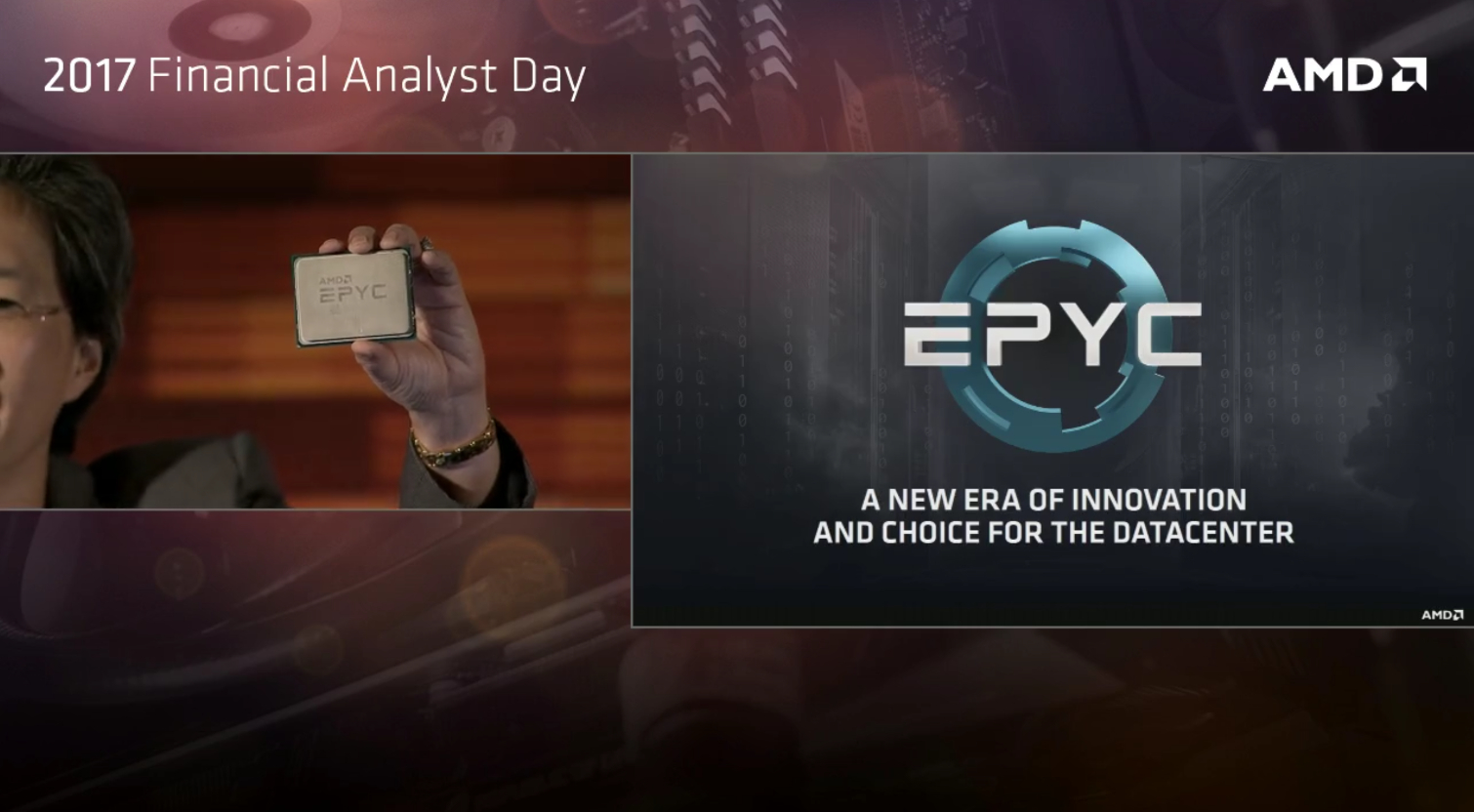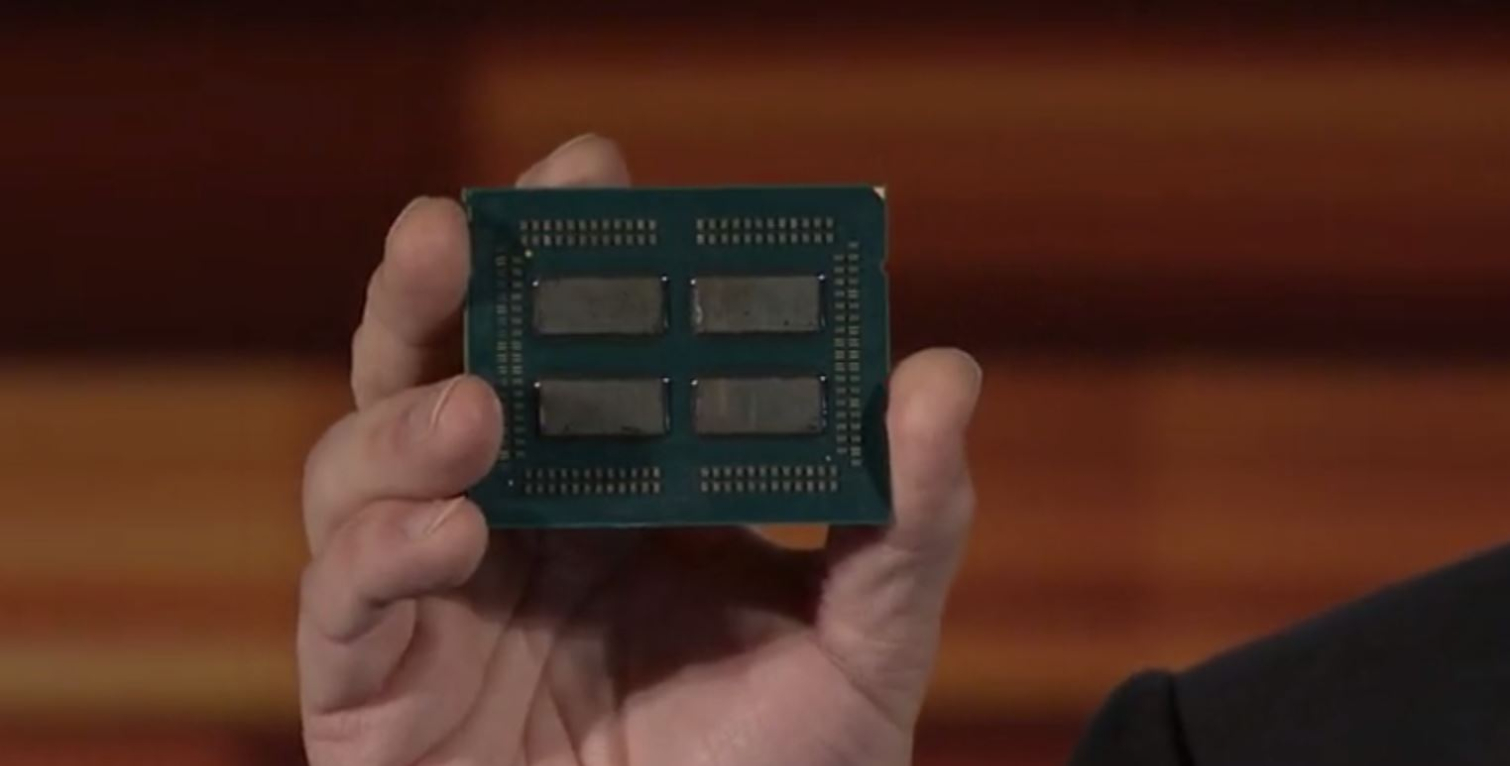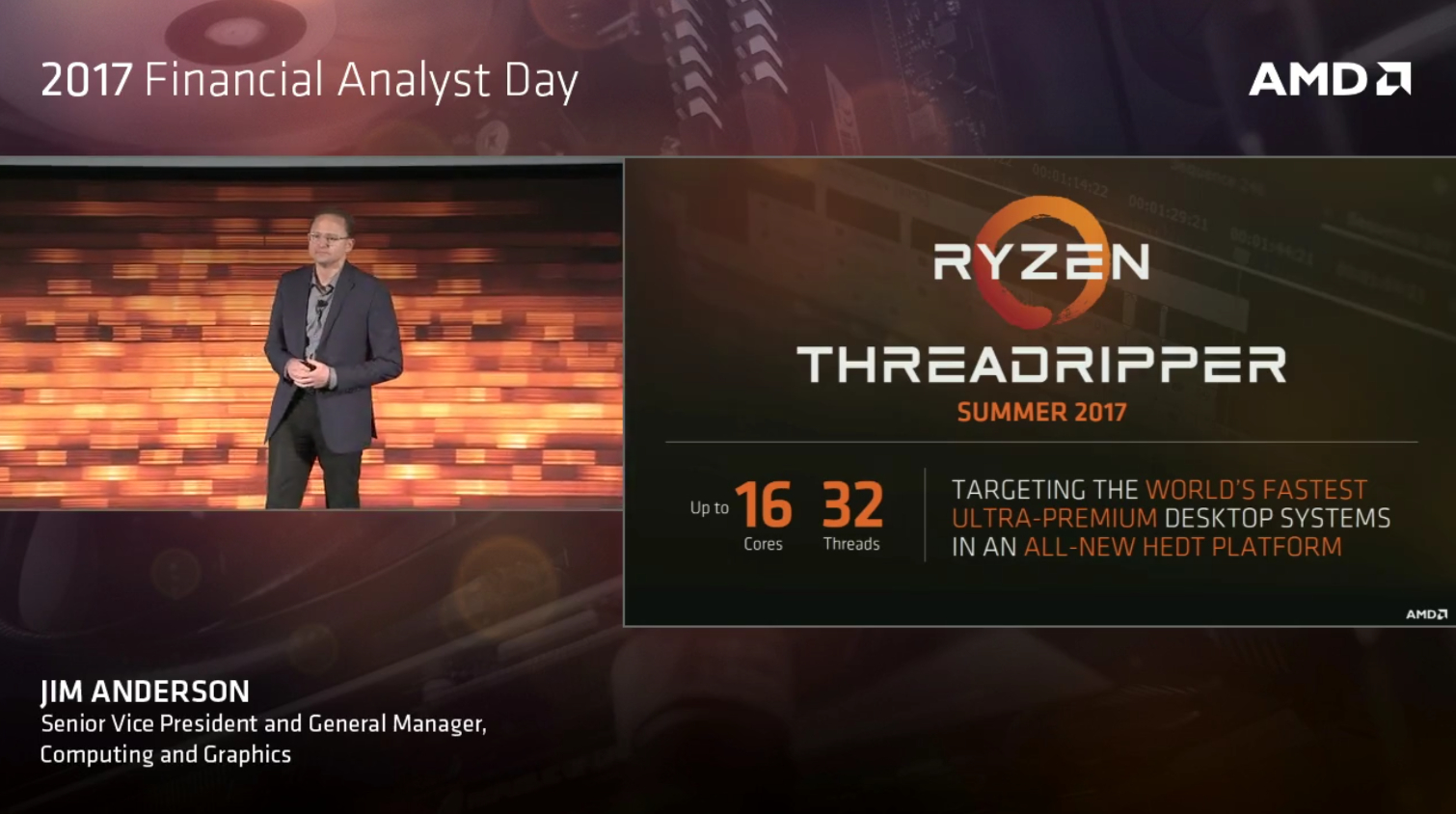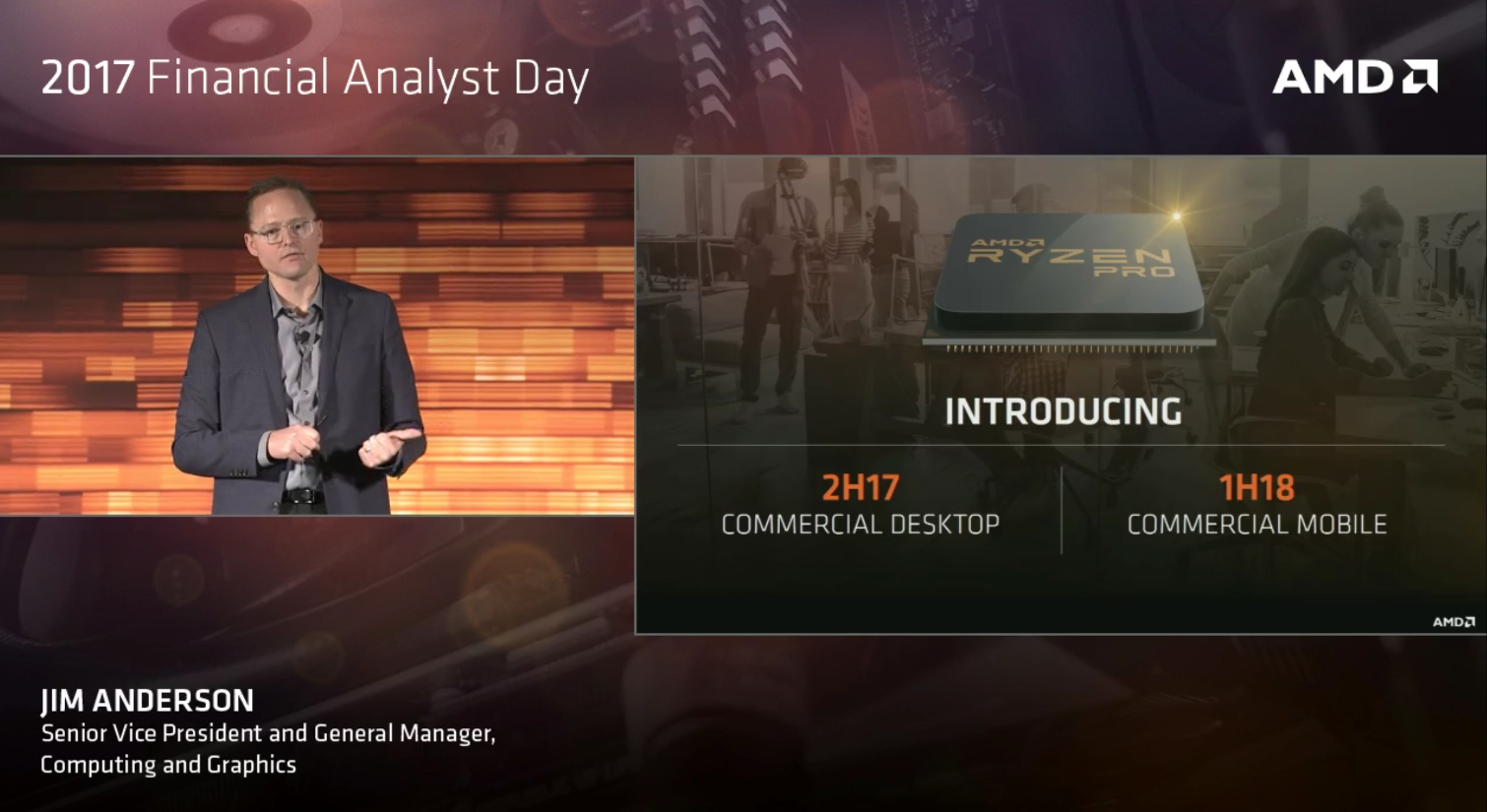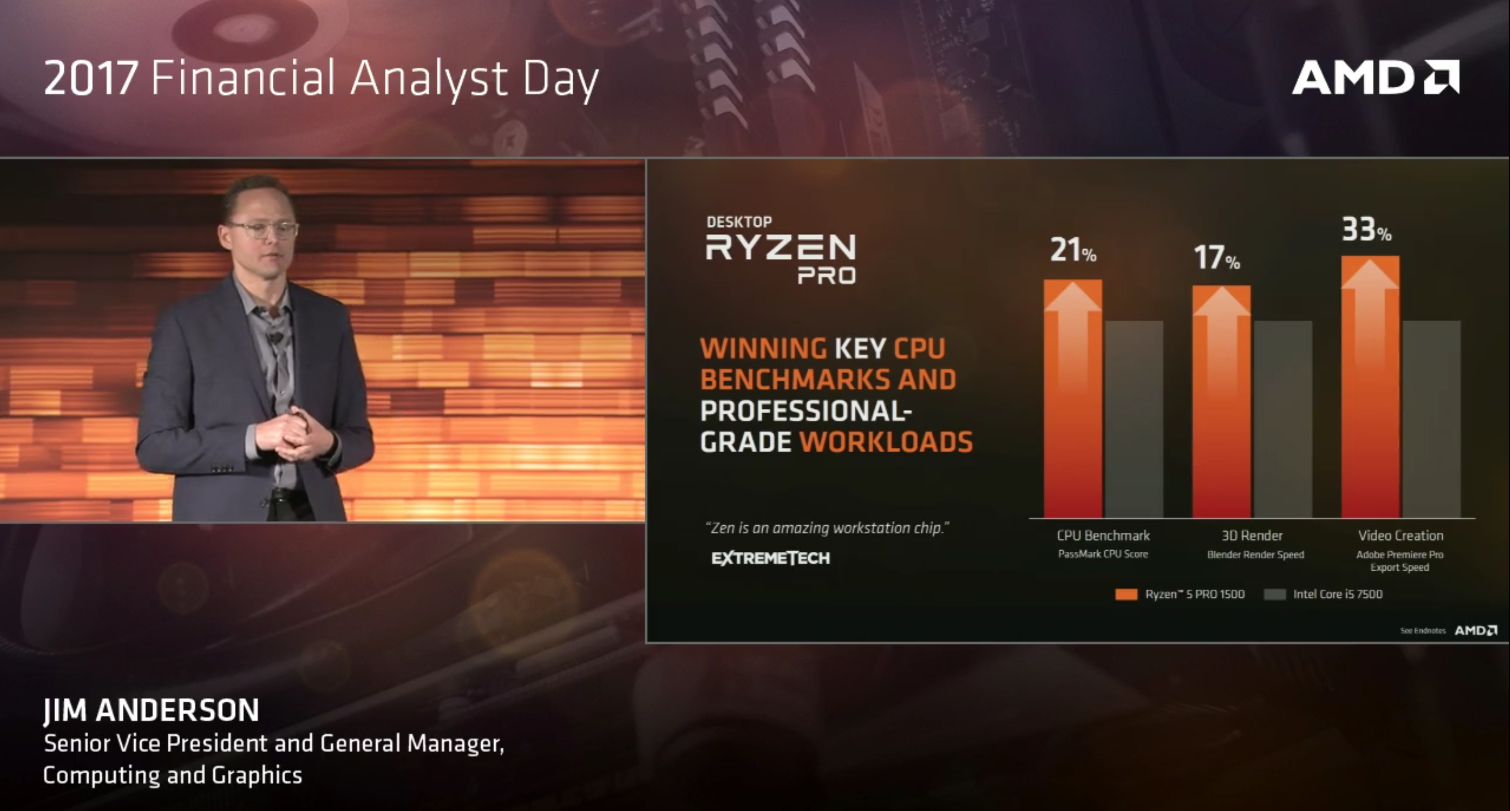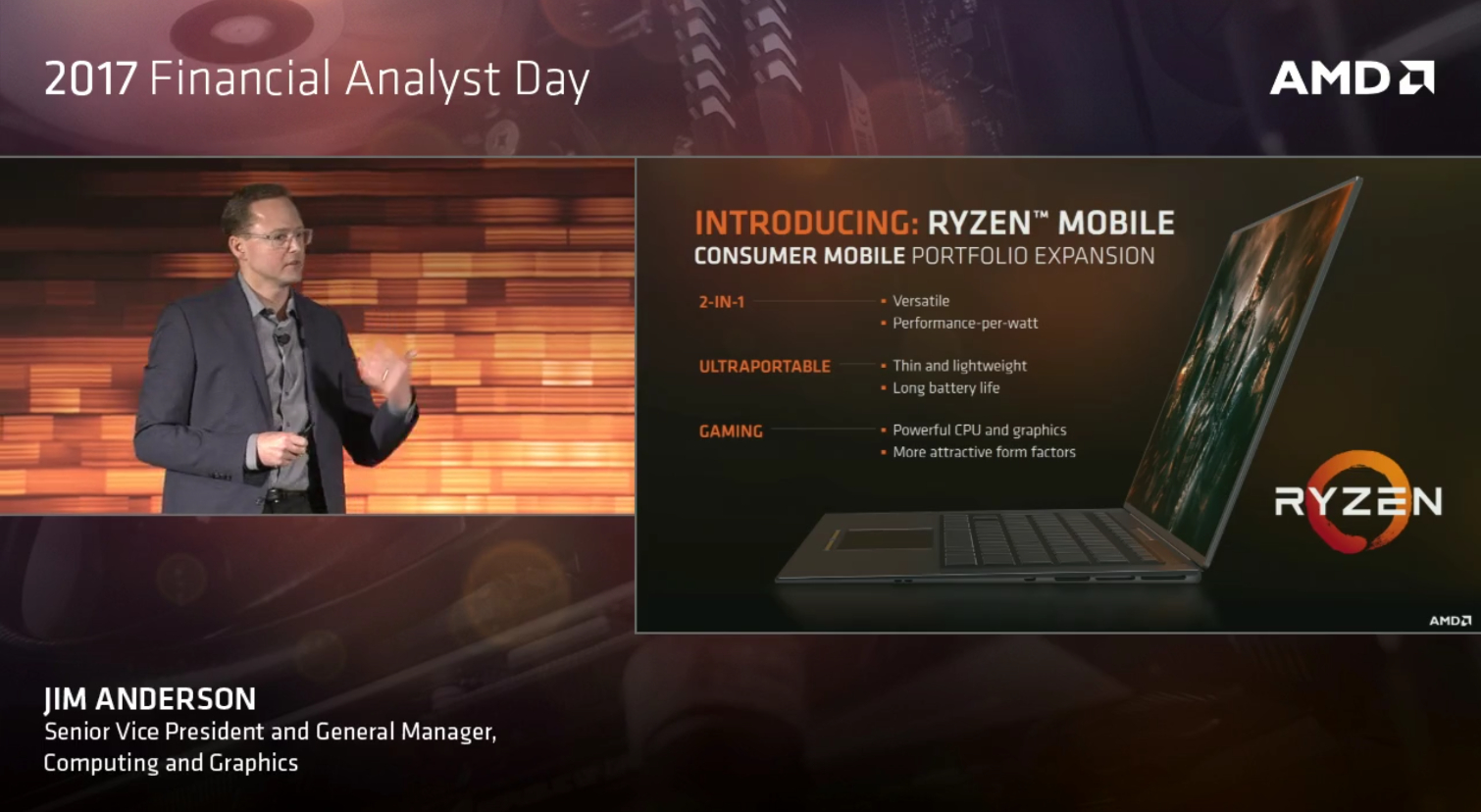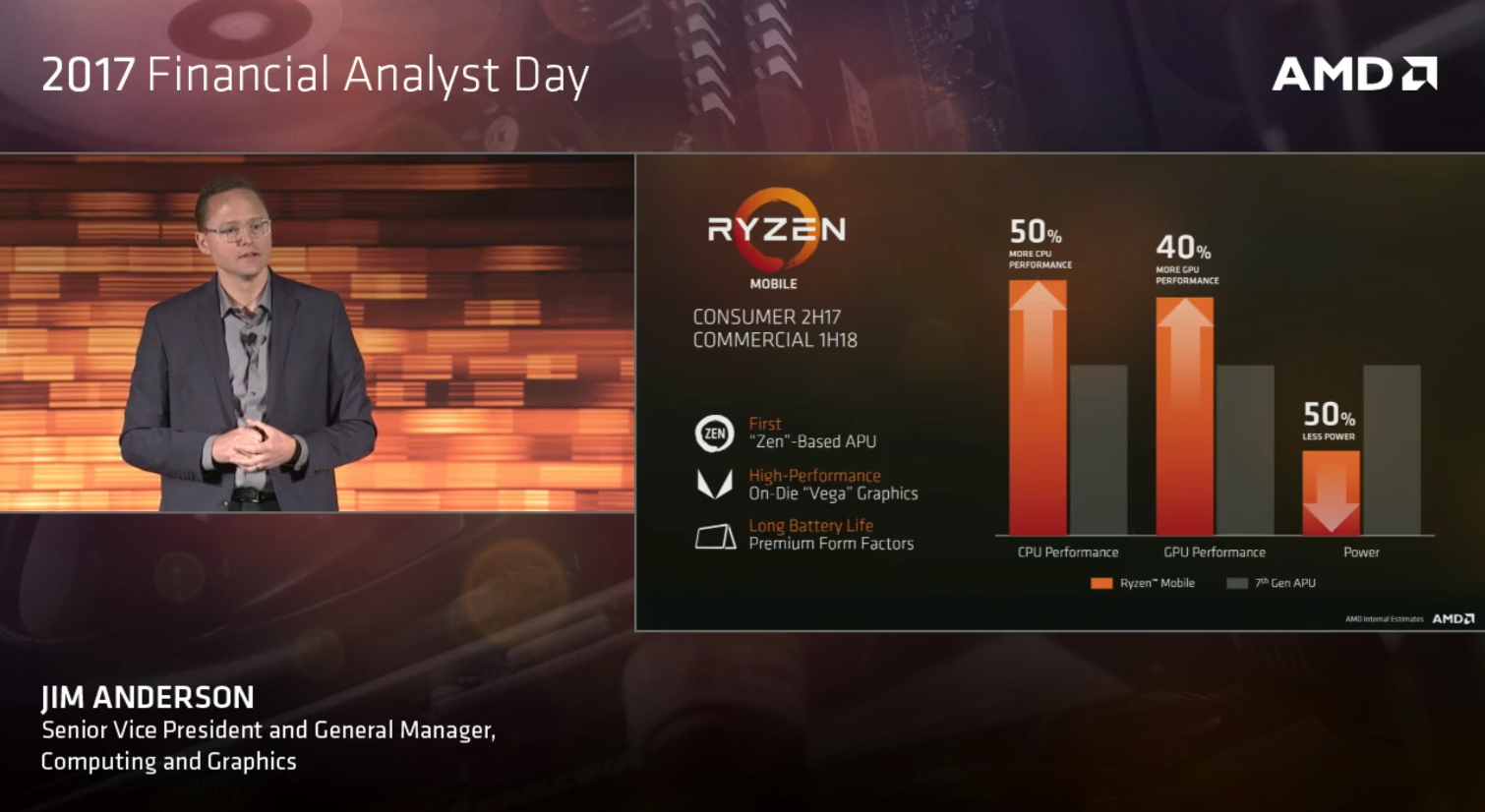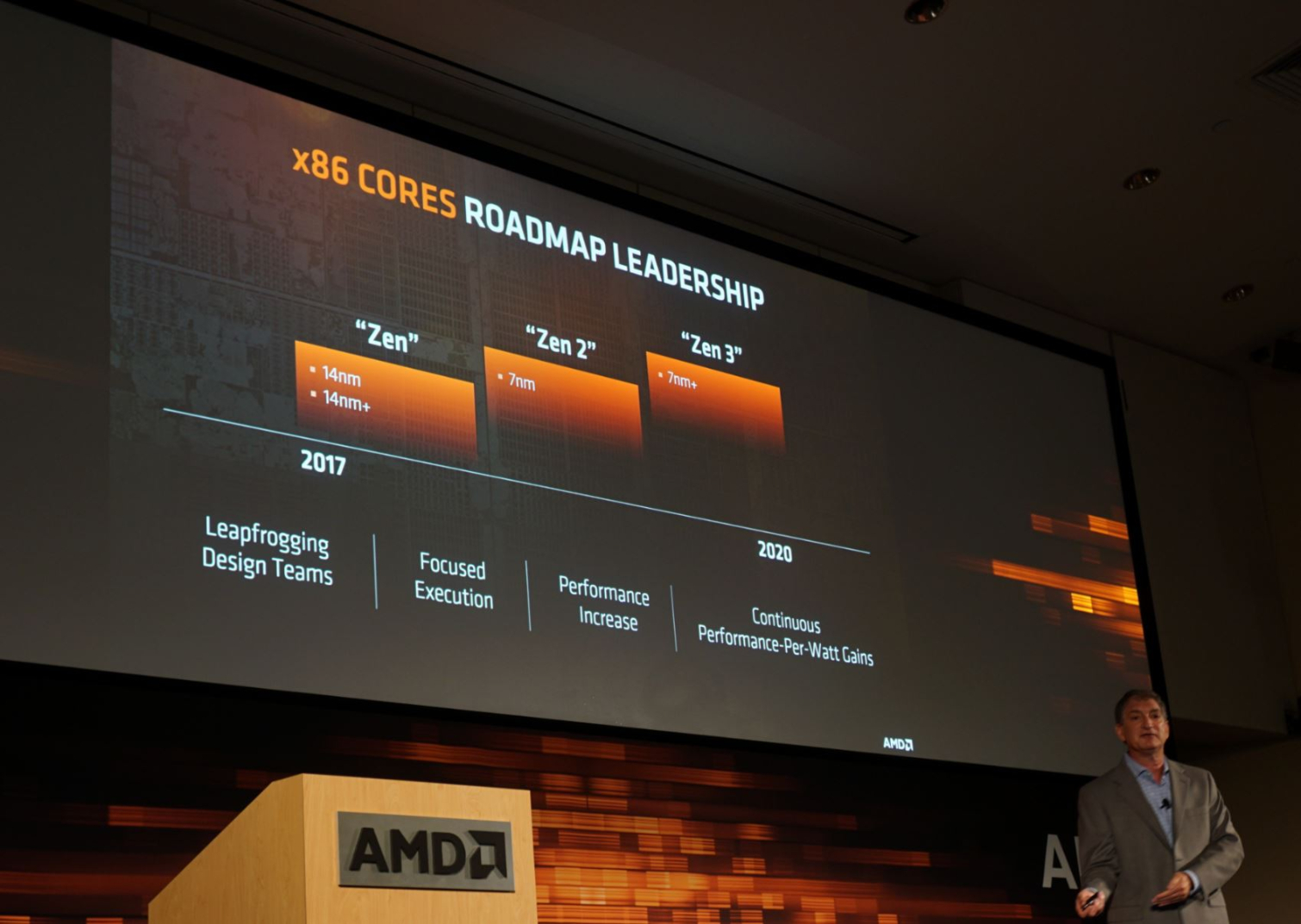AMD News Galore: Threadripper, EPYC, Ryzen Pro Processors, Integrated Vega Graphics For APUs, 7nm Ryzen Roadmap
At its financial analyst day in Sunnyvale, AMD continued rolling out its product roadmap, specifically announcing a much-anticipated 16-core/32-thread product at the high-end of the desktop space, known as Threadripper, as well as Ryzen Pro for the professional segment, EPYC for the data center, and the inclusion of Vega as an integrated GPU in forthcoming APUs. The company also announced that 7nm+ Zen products would debut in 2020.
EPYC
To start the show, AMD CEO Lisa Su unveiled the new EPYC data center processor. EPYC appears to be the new branding for the Naples data center processors that AMD announced last year. These 32-core/64-thread processors support 128 PCIe 3.0 lanes, and AMD has designed them specifically to interact well with its Vega GPUs.
Su noted that the copious PCIe connectivity will allow the dual-socket server platforms to support more GPUs than Intel's competing products. The processors support eight memory channels per socket, for a total of 16 DDR4 channels and 32 DIMMs in a two-socket server (up to 4TB of memory).
AMD also displayed EPYC with the heatspreader removed, and we spotted four 8-core Zeppelin die on a single package (MCP). These four die are glued together with AMD's Infinity Fabric.
Threadripper
AMD also announced its Threadripper CPUs for the high-end desktop segment. These 16-core/32-thread processors will debut this summer, but the company didn't provide any further details. Pricing will play an important role, but frankly, 16 cores is plenty exciting. Intel's 10-core/20-thread i7-6950X Broadwell-E weighs in at $1,700, and considering AMD's Ryzen pricing history, we can expect a much lower price point than that to get more cores.
Ryzen Pro
AMD also announced its new Ryzen Pro series of processors. These new chips are destined for the commercial desktop and mobile segments and will launch in 2H17 and 1H18, respectively.
AMD, again, provided very little detail, but Ryzen's extra cores and threads will play quite well in the professional segment, but the lack of integrated graphics may restrict the addressable market. AMD has also focused on providing enhanced security features for the new lineup, and we expect more details will follow.
Get Tom's Hardware's best news and in-depth reviews, straight to your inbox.
Integrated Vega Graphics
AMD announced that the Ryzen Mobile products will feature on-die Vega graphics, which is a great indicator that we can expect Vega integrated graphics on the forthcoming APUs, as well.
AMD also provided a few rough details, such as 50% more CPU performance than the 7th-generation (A-Series) APUs and 40% more GPU performance. AMD also claimed that they'll consume 50% less power, which is attractive for the mobile segment.
Finally, as encouraging as many of the announcements are, AMD has more to come. The company divulged that it will debut its Zen 3 products on Global Foundries' second-generation 7nm+ process in 2020. The first generation 7nm process will obviously debut in the interim, but the company did not provide a firm timeline for it.

Paul Alcorn is the Editor-in-Chief for Tom's Hardware US. He also writes news and reviews on CPUs, storage, and enterprise hardware.
-
bit_user ReplyThe processors support eight memory channels per socket, for a total of 16 DDR4 channels and 32 DIMMs in a two-socket server
Ah, but the catch is that it has the memory topology of a 8-CPU system. Lots of aggregate performance to be had, but you've got to take great care in distributing your data & threads. -
JamesSneed What a fun year this is turning out to be a tech enthusiast. Kaby Lake, Ryzen, Vega, "Threadripper", Skylake-x, Kaby-Lake-x. I don't recall this much going on in one year a loooong time.Reply -
rhysiam We'll have to see how the infinity fabric and inter-core/inter-die latency plays out with server workloads, but if AMD have been able to keep that under control then those HEDT and Server CPUs look amazing. "EPYC" is an awful name, especially for a server CPU, but it's performance that counts.Reply
AMD also displayed EPYC with the heatspreader removed, and we spotted four 8-core Zeppelin die on a single package (MCP). These four die are glued together with AMD's Infinity Fabric.
So are these literally identical dies to the ones we see in current Ryzen consumer products (Ryzen 7 etc)? That's some impressive scaling AMD have managed if they can use a single die design, with multiple package arrangements (1, 2 or 4 dies on package), to scale from a mid range consumer CPU (Ryzen 5 1400), through HEDT (16 core 32 thread), all the way up to a premium dual socket compatible server CPU (32 core, 64 thread, 8 RAM channels). With AMD's limited resources, having a single flexible silicone die makes sense, and also makes their achievements with "zen" all the more impressive IMHO. Does this also shed light on the lower clock speeds and sometimes less than competitive IPC (particularly with gaming workloads) on Ryzen 7 & 5 CPUs? Trying to make such a scale-able design must involve compromises along the way?
My one disappointment with all this is seeing Zen 2 tied to a new process. AMD were talking up plenty of "low hanging fruit" which could be addressed in future zen architectures to raise IPC and clock speeds, which makes sense when iterating on a brand new architecture (as opposed to Intel's core architecture, where all the easy performance gains were extracted years ago). Tying Zen2 to Glo-Fo's 7nm process put the timelines largely out of AMD's hands, and means many of the performance/power improvement dot points are likely to come from process improvements as much as architectural refinements.
Anyway - interesting times for sure. -
bit_user Reply
Don't praise them until you see the data. If they haven't got more PCIe lanes per Zeppelin than the 20 (24, if you're stretching it) that Ryzen exposed, I think it might not be enough.19699643 said:So are these literally identical dies to the ones we see in current Ryzen consumer products (Ryzen 7 etc)? That's some impressive scaling AMD have managed if they can use a single die design, with multiple package arrangements (1, 2 or 4 dies on package), to scale from a mid range consumer CPU (Ryzen 5 1400), through HEDT (16 core 32 thread), all the way up to a premium dual socket compatible server CPU (32 core, 64 thread, 8 RAM channels).
Agreed. I sure wish they could use Samsung. I have yet to see their Glo-Fo ties do anything but weigh them down. They better be getting some sweet wafer pricing, at least.19699643 said:Tying Zen2 to Glo-Fo's 7nm process put the timelines largely out of AMD's hands, -
InvalidError Reply
It isn't really that impressive, this is basically a 4S multi-CPU built into a single MCM. Same principles but higher integration.19699643 said:So are these literally identical dies to the ones we see in current Ryzen consumer products (Ryzen 7 etc)? That's some impressive scaling AMD have managed if they can use a single die design
-
WeldonB8 Kinda like "JAMESSNEED" said this is turning out to be an exciting year, near the end of summer last year I read somewhere 2017 will be a year to remember, and to watch out for Intel, I don't recall anything about AMD but Iv bought every component for a new rig except CPU, mobo and RAM just waiting to see what comes out lol.Reply -
Johnpombrio One Ryzen core=Ryzen HEDT. 2 Ryzen cores=Threadripper. 4 Ryzen cores (plus one BIG interposer and a whole lot of pins)=EYPC.Reply -
bit_user Reply
You forgot 3D X-Point finally reaching the market.19699532 said:What a fun year this is turning out to be a tech enthusiast. Kaby Lake, Ryzen, Vega, "Threadripper", Skylake-x, Kaby-Lake-x.
People rip on Intel for being late and falling short of their original claims, but honestly it's the brightest persistent memory technology on the (near) horizon. And it arrives none too soon - just as ever slower 3 & 4-level cell NAND is starting to dominate. Now, we just need prices to fall down to Earth. -
bit_user Reply
Yes, if you mean dies - not "cores".19699925 said:One Ryzen core=Ryzen HEDT. 2 Ryzen cores=Threadripper. 4 Ryzen cores (plus one BIG interposer and a whole lot of pins)=EYPC.
